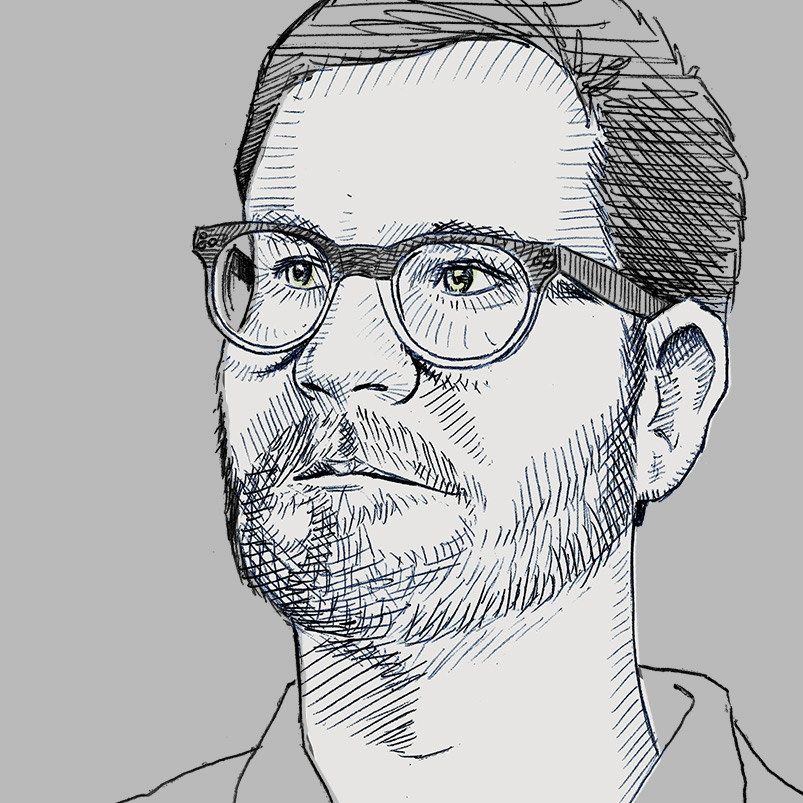Interview: Matt Kenyon
The cross-platform artist talks technology, politics and his newest work, SUPERMAJOR
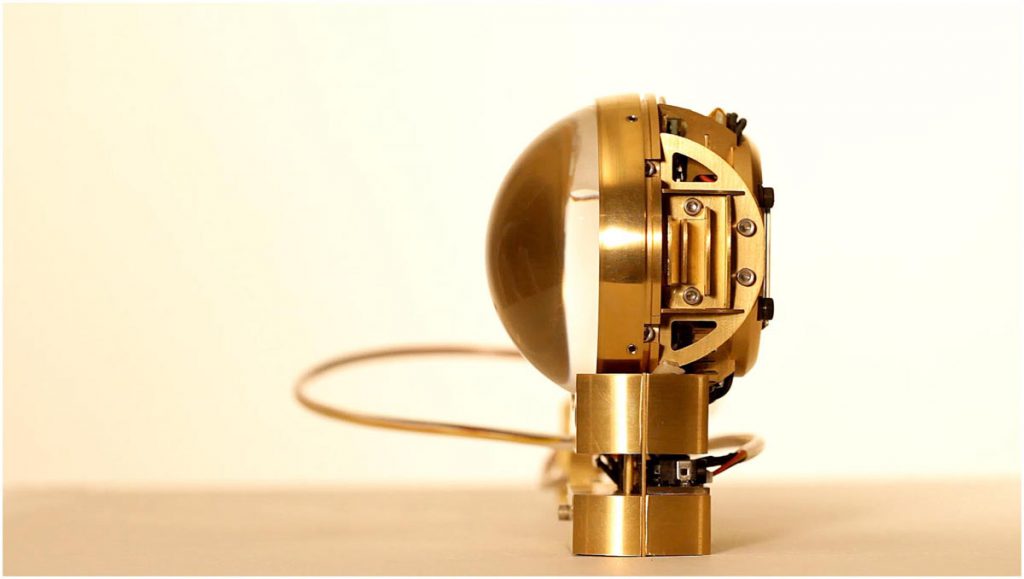
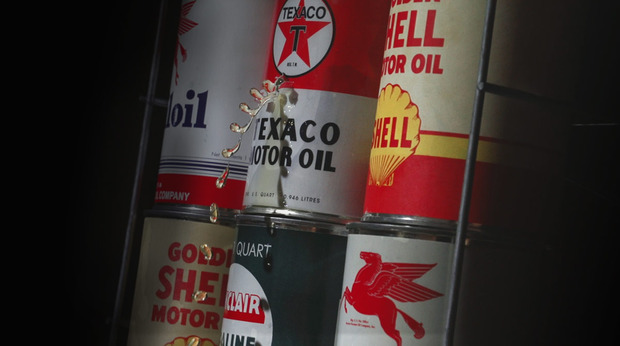
Best described as a bit of a tech nerd with creative interests, Matt Kenyon also has a score to settle with big business and irresponsible government. Reacting to the economic and social impact engendered by their misbehavior, Kenyon joined forces with Doug Keaton in 1999 to found SWAMP, a cross-platform initiative combining technology and art. Ranging from living micro-organisms Tardigotchi to ecosystems whose sustainability is correlated with stock-exchange performances, their work stands out for creatively combining political engagement and technological approach.
Kenyon, whose notebooks from the 2011 interactive exhibition, “Talk to Me” have been acquired by the MoMA for its permanent collection, is showing his most recent work at Katzen’s museum in Washington, DC through 16 December. “SUPERMAJOR” consists of an oil fountain made out of cans, however, instead of flowing out of the cans, through a subtle technologic subterfuge, oil seems to be flowing back in. We recently talked to the artist—who describes himself as “something between an artist, hacker, a scientists and a farmer”—about his latest exhibition, his creative and technical approach and his inspiration.
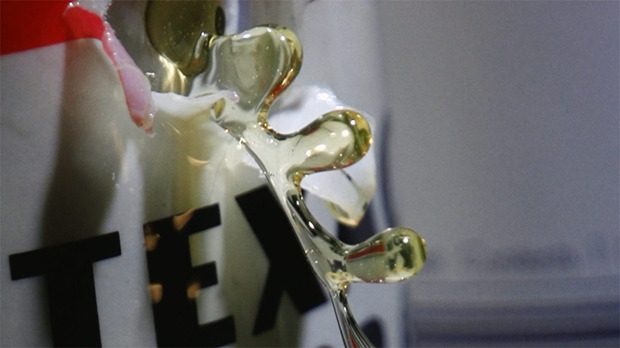
Can you tell us the background behind SWAMP?
I studied painting and printmaking at Virginia Commonwealth University. I was there at an exciting time when being a painter stopped being defined strictly by materiality. In regards to SWAMP, which stands for Studies of Work Atmospheres and Mass Production, it all started back in Louisiana where I met another former painter Doug Easterly. Doug and I founded SWAMP together, when both of us were living and working in Hammond, Louisiana. Hammond is a small, eclectic, Southern town located at the crossroads of highways and cultures just outside of New Orleans. While living there we witnessed construction of the area’s first mega Wal-Mart and experienced the resulting social and economic changes. A lot of these changes have become obvious and well-known. However, at the time, the anti-market effects were something completely new and unforeseen for us. Wal-mart was the subject and location of the first SWAMP project titled Walmartathon. For the Walmartathon performance, a system of rules were established to parody the encompassing tentacles of retail offered by Wal-Mart. First, we were to stay inside the building for 24 hours and second, everything worn, ate, consumed and used to produce artwork had to be derived through purchases made in the store—this required buying and changing into new clothes, marking the start of the performance.
SWAMP continues to find creative expression within elements of culture that are considered inherently counter-creative.
How has SWAMP evolved since?
Over the last 12 years SWAMP has expanded its scope of investigation far beyond the walls of the local Wal-mart. Despite this expanded focus, I think something of that original performance remains: SWAMP continues to find creative expression within elements of culture that are considered inherently counter-creative. The strains of long-distance collaboration are extreme. After 11 years of working together, Doug and I discontinued our collaboration early in 2012 and I am continuing on my own with SWAMP. Although Doug and I no longer directly collaborate we are still very close and continue to share ideas. We Skype every week.
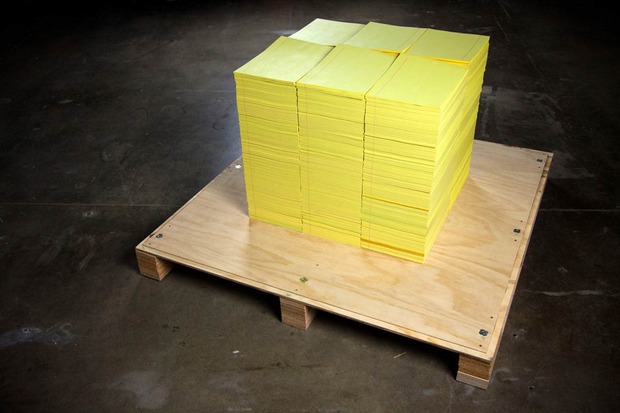
Your pieces involve a variety of media. What technologies do you employ?
There is this great Jello Biafra quote, “Don’t hate the media, be the media”. I like to work with media and technology because (a) I am familiar with them and like the power they hold, and (b) I hate them and I am afraid of the power they hold. There is a fantastic RE-Search interview with Mark Pauline from several years ago. In it he discusses how his passion for hacking industrial technologies is to ensure that artists are have their hands on them—that they aren’t simply used for utility. This also is reminiscent of Norbert Wiener’s conclusions in Human Use of Human Beings. I investigate digital technologies in a similar way. These things are out in the world and it is up to artists to usurp them as needed, whenever possible.
These principles frame the type and extent of media technology involved. SWAMP’s works range from subtle nuance to obnoxious spectacle. Some projects are materially unassuming, Notepad for instance, used little more than ink on paper. However, with Notepad what looks like an ordinary yellow legal pad is revealed (when magnified) to be micro-printed text enumerating the full names, dates and locations of each Iraqi civilian death on record over the first three years of the Iraq War. Hundred of these notepads have been covertly distributed to US representatives and senators, as a sort of Trojan horse, injecting transgressive data straight into the halls of power and memorializing it in official archives. Other projects, like Tardigotchi, involve a broad deployment of media and specialized technologies: microorganisms, microcontrollers, servo actuators, computer aided design and custom CNC milled parts.

Working with such media requires various fields of expertise. How do you approach collaboration?
In 2011, the Penny W. Stamps School of Art & Design hired me as part of a research cluster dedicated to the theme of computational media. I am fortunate to be teaching at the University of Michigan, one of the great American universities where collaboration is ardently encouraged. It has been a huge boon to my studio practice to be surrounded by brilliant faculty and students from diverse disciplines. For Tardigotchi, I had the opportunity to collaborate with Tiago Rorke a supremely talented designer based in New Zealand.
How do you choose the technology you want to use according to the message you want to express?
I always start with the idea. It might not be a fully flushed out concept, it might be little more than a sketch. From that point it becomes a lot of research, hard work and experimentation. Sometimes this idea is in response to a piece of absurd technology that already lives in the world. Take Meat Helmet for instance: A while back, McDonald’s produced the Adult Happy meal, which replaced the “prize” children would receive with a pedometer adults could use. This step-counter was a humorous attempt to derail a growing awareness of McDonald’s unhealthy menu selections. This step-counting technology was the point of departure for the entire project. Meat Helmet became the antithetical adult-happy meal designed to reveal, rather than conceal, the contradictions inherent with health-conscious fast food. The repurposed and reprogrammed step-counter controlled pneumatic “air muscles” forcing me to chew enough to burn off the entire meal. The grueling performance consisted of me chewing a single Big Mac sandwich at my local McDonald’s for eight hours (The Big Mac = 560 calories, chewing = 70 calories/hour).

All of your work addresses topical critical themes that combine politics, economics or environment. What are the ideas underlying what you do?
A lot of my work has this underlying theme: a scenario where the individual assumes the role of the demographic, a sort of performative synecdoche. With SWAMP, I’m trying to construct a contrasting lens that allows for a clearer perspective of the consumer-corporation relationships that many take for granted. Are we more than our choices between goods and services? Wal-mart doesn’t think so. The genius of Wal-mart’s customer profiling system is that it is able to package the surrender of individual privacy together with value-added consumer rewards. People can be convinced to relinquish personal rights and individualism to metahumans, and through mass media, even be convinced that they are benefiting from this transaction. No one will trade off his or her freedom at face value. But when freedom is dissected with the resultant parts artificially misrepresented and framed against other ideological commodities, like “patriotism”, then complicated scenarios ensue where aggregate freedom is chipped away.
A similar effect is procured in the domain of retail. How much is privacy worth next to mountains of goods priced at a bargain? With extended store hours? With countless advertisements rhythmically providing cadence for our television shows? Assisting this sentiment has been the success of big-box retail chains to brand their way into formidable cornerstones of cultural ideology; people are jubilant when their small town is chosen to host resplendent emblems of purchasing power. These heralded manifestations of big-box retail are all quite glamorous and conspicuous in comparison to the hidden realities (trodden human and environmental rights) that support such a spectacle.
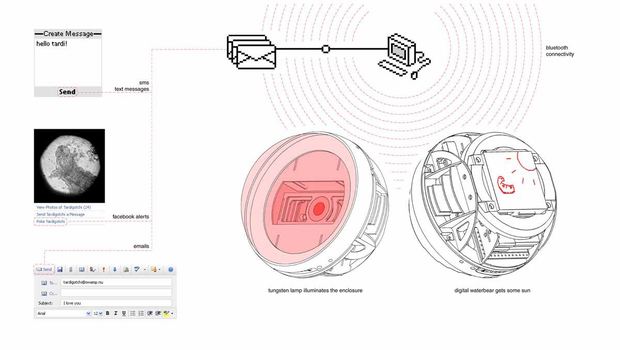
The technique of SUPERMAJOR is quite stunning: a complex lighting system seems to be synchronized with oil flowing. Without giving us all of your secrets, would you mind explaining how you accomplished this process?
Yes, you are correct the lighting plays a vital role in the functioning of SUPERMAJOR. The visual effect is similar to the way a zoetrope functions only it uses droplets of motor oil instead of a sequence of quickly moving images.
SUPERMAJOR takes a critical stance at oil industry. This is illustrated by the oil seemingly flowing in instead of out the cans. What is the idea behind this piece?
The title for SUPERMAJOR is a term derived from of what was named the “Seven Sisters”, the seven oil companies which formed a global cartel and dominated the world supply of oil from 1940s-1970s. Members included the Anglo-Persian Oil Company (now BP), Gulf Oil, Standard Oil of California (SoCal), Texaco (now Chevron), Royal Dutch Shell, Standard Oil of New Jersey (Esso) and Standard Oil Company of New York (Socony) (now ExxonMobil). When doing research for SUPERMAJOR, I spent a lot of time watching video footage of the BP Deepwater Horizon oil spill. The seemingly endless violent evacuation of oil into the surrounding water is starkly contrasted with the golden honey-like liquid poured out of a fresh can of oil. It is brilliant how the uncontrolled gusher is continually transformed into such a tame commodity. Because of the unimaginable scale of events like Deepwater Horizon, there is a macabre faith that this fossil fuel abundance may never end. Another good example of this is Centralia, a coal-mining town in central Pennsylvania that has been burning for over 50 years. These disasters give us a clear image of the implications of such abundance and waste. I wondered what other forms this faith might take. So I decided to build SUPERMAJOR.
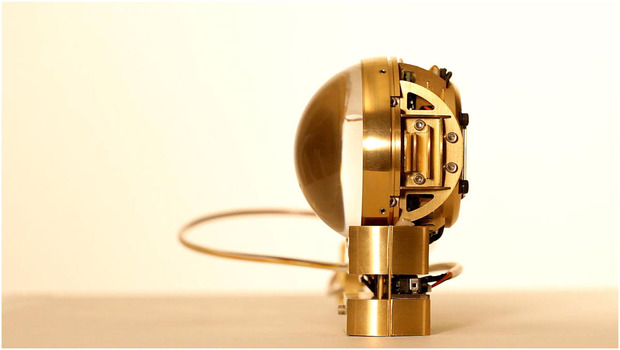
Where do you find your inspiration? Have you been influenced by specific artists or thinkers?
The machine performance art group Survival Research Laboratories was an early influence on the formation of SWAMP. My students are a daily source of inspiration and mass cultural levity. I am voracious reader of sci-fi writers Philip K. Dick and Neal Stephenson, philosopher Manuel De Landa, scientist Jared Diamond and theorist Douglas Rushkoff. When I’m working in the studio I often listen to Radiolab which is one of the best things around.
What are you working on right now?
Right now I am working on more new work for an upcoming exhibition, “(In)Habitation”, for the Detroit Museum of Contemporary Art in June 2013. I’m excited to be exhibiting alongside Osman Kahan and Jason Ferguson. The newest thing in my studio is Fat Stacks, a sculpture built entirely out of money-counting machines. I’ve been thinking a lot about recent revelations in what led to the most recent global financial crisis. These are the same machines they use in banks and casinos to count big stacks of paper currency. A stack of bills is placed in a compartment on top of the machine, and then one bill at a time is mechanically pulled through the machine and numerically counted. I’ve daisy chained all of the machines together aligning input hopper to output tray forming an endless monetary möbius strip. It is designed to count and recount a single one-dollar bill. Endlessly.
Video and images courtesy of Matt Kenyon.
